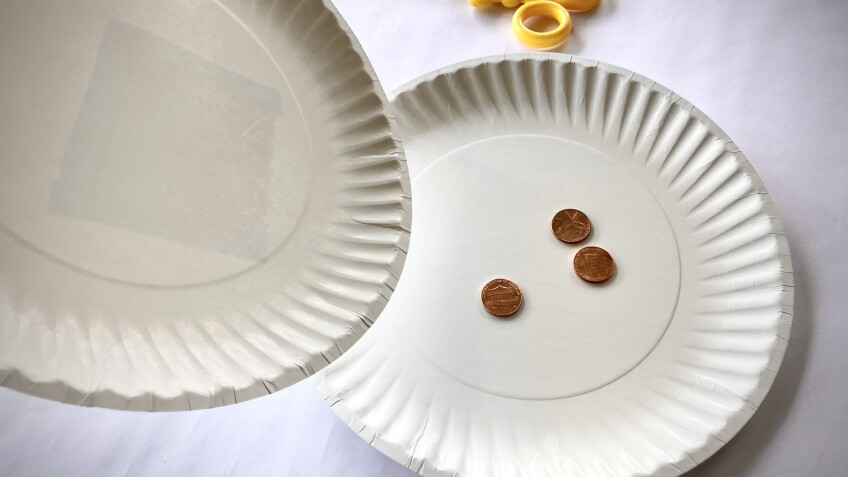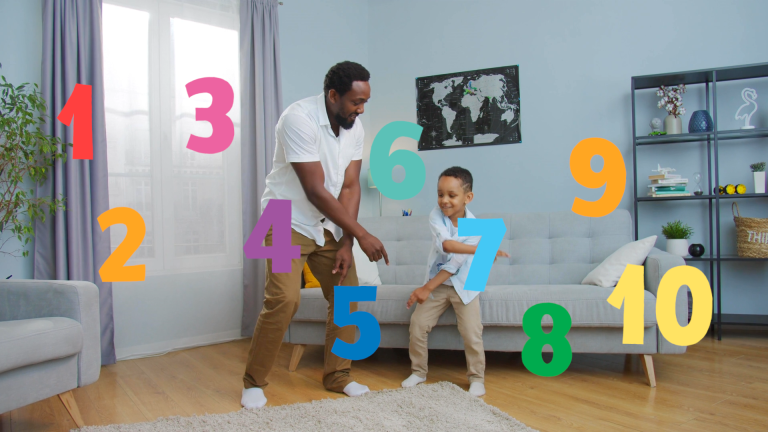Abracadabra! Find the Magic of Math with These Simple Mathematical Tricks
“Abracadabra, make two more pennies appear!” my daughter said as she shifted the paper plates to magically show three pennies total on the table. Money appearing from thin air is everyone’s dream, and now with some math magic, your little mathematician can wow the crowd. When we make early math concepts simple and fun, kids feel empowered to continue to learn — and that truly is magical!
It's a good thing that we can teach math to our youngest learners with play! As the National Association for the Education of Young Children suggests, “playing math games with children can be a fun, developmentally appropriate way to spark understanding of big mathematical ideas.”
Here are some easy-to-learn illusions that will infuse math with the enchantment of magic.
Magically Appearing Pennies

Learning Goal
Cover the basics of addition, subtraction, shapes and counting with this simple illusion made with everyday household materials.
Materials
- Two paper plates
- Tape
- Construction paper
- A minimum of three pennies
Step-by-Step Instructions
1. Draw two squares or rectangles on a piece of paper. Talk about the shape and have your child trace them.
2. Tape three sides of the small paper squares onto the back of each paper plate, forming one little hidden pocket on each plate. Count the three sides together and talk about the shape.
3. Slide a penny into one of the pockets. Repeat with the other plate.

4. Carefully flip the paper plate over, ensuring the penny does not fall out and that the opening of the pocket is facing inward. Repeat with the other plate.
5. Introduce the magic trick to the crowd with your child, emphasizing the math. First, you need to place one penny on a plate. Later, you can say, “Look closely at the plates. Count how many pennies you see. You only see one. I am going to add two pennies. How many will we then have? Let’s add: one plus two equals three. We will have three pennies.”
6. Tilt one paper plate over the other, creating a slide for the penny to slide out of the pocket and onto the other plate. Repeat with the other plate.
7. Count again, emphasizing that when we add two pennies to the original penny, we now have three.
8. Repeat the trick, adding and counting different numbers of pennies each time.
Disappearing Crayons
Learning Goal

Learning Goal
This simple illusion makes regular crayons disappear right before your eyes! It’s a fun way to help children visualize rations and proportions while also comparing sizes and lengths.
Materials
- Small box of crayons
- Scissors
- Tape
Step-by-Step Instructions
1. Talk to your child about the crayons in the box, noticing how long they are and the colors. Count how many are in the box.
2. Next, have a quick chat about proportions. At this age, keep it simple with words like half and smaller.
3. Show your child how one crayon can be cut in half, noting how the two halves are the same length. Compare the two halves to one whole crayon and point out which is smaller and which is longer.
4. Using sturdy scissors, and emphasizing that this is a task for grown-ups, cut the remaining crayons in half. You can also snap them in half carefully.
5. Lay the top halves of the crayons on the table. Line them up as they were in the box and tape the bottoms so they are grouped together.

6. Cut a small window on the front of the crayon box (so the tops are visible) and place the taped crayons inside.
7. When you place pressure on the box the crayons will stay up in that window. When you release them, they will fall below the window into the empty space below and “disappear.”
Note: Halved crayon are still great to use! However, if you'd like to create something new out of them, find instructions on how to melt different crayons together to make swirled ones.
Out-of-Order Deck of Cards

Learning Goal
Nothing says magic tricks like a deck of cards! This simple “trick” is perfect for the smallest kids who still believe that “if they can’t see you, you can’t see them while playing hide and seek.” Go along with it and let them shine! This trick will help your child practice number recognition and ordering.
Materials
- A deck of playing cards
Step-by-Step Instructions
1. Look through the deck of cards and pull out cards two to six of one suit. For example, you can pull out the red hearts that are numbered from two to six. Help your child count and identify the numbers.
2. Scramble them so they are out of order.
3. Show the out-of-order cards to the audience.
4. Turn around so the audience can't see and order the numbers in the correct order.
5. Turn back and face the audience. Say “abracadabra!” and then show the correctly ordered cards to the crowd. Ta-da!



